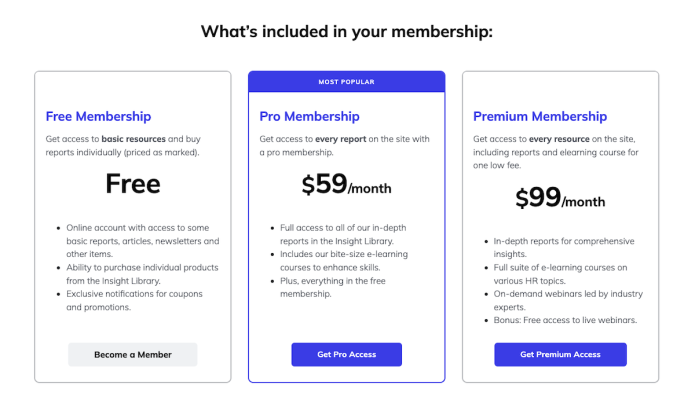
So you’re ready to get serious about blogging for business? I don’t blame you not one bit because blogging is serious business. You’ve probably heard about all the benefits of blogging for business, but you’re still on the fence. I can tell you first hand from experience that blogging is in fact a very effective marketing and tool for small businesses – if you are consistent with it and blog with a purpose.
How Blogging For Business Works…
Picture this: Gina is a solopreneur that has recently launched a new website to market her new bakery shop online to local Seattle customers. She is bootstrapping her business and does not have a large marketing budget, but wants to get the message out about her new company.
Gina decides to write a blog post that covers “10 Tips for Creating Cake Frosting In Under 10 minutes”. A user performs a search on google for cake frosting tips, finds Gina’s blog post, checks out her website, then decides to contact her after reading more about her services.
That my friends is an example of how blogging can work for your business. Using this same example, let’s take things a step further.
Gina decides to start a Twitter account. She then searches for specific hashtags and keywords related to her niche. Next, Gina starts to find and follow people on Twitter that she wants to target that are local to the Seattle area and are interested in baking and etc. Gina works diligently to build up a targeted following on Twitter for the next several weeks.
She then decides to Tweet out the blog post that she has written to her followers on Twitter. A fan see’s the post, likes it, shares it, then visits her website + contacts her about her services. This is yet another example of the power of blogging (more specifically) combined with content marketing can work for your business.
1. Do Research to Find Topics That Your Audience Cares About
Believe me, this is without a doubt one of the first things that you need to do before you start blogging. Before you start adding content to your blog, you will first need to understand the needs of your audience – as in “what challenges they are having” so that you can structure your content around those issues.
A few things that you can do to find fresh blog topic ideas would be to scan popular forums in your niche, scan the comments section of your blog or popular blogs in your industry, or simply asking your audience what their biggest struggles and frustrations are.
2. Create An Editorial Calendar
If you want to publish content to your blog consistently, creating an editorial calendar will make it easier for you. An editorial calendar is a document that you can use to manage, track and record your blogging efforts. Evernote and Google Docs are a few tools that you can use to create content calendars.
3. Plan Out Your Content In Advance
Serious bloggers make it a point to plan out their blogging activities well in advance. I can tell you from experience + years of blogging that trying to create content on the fly is veryyyy difficult. You don’t have time to organize your content, brainstorm blog topics, make the necessary corrections to your content, schedule out your blog posts, and most importantly create a content marketing strategy.
Getting your blogging activities organized will save you a lot of time because you will already have a set plan in place that you can follow and …more time to create killer content for your readers. For newbie small business bloggers, I think that planning out your blog posts a month or 2 in advance is a good place to start. From there, you can level up your blogging efforts + start scheduling things out even further.
4. Set A Blogging Schedule And Stick To It
A blogging schedule is simply setting a firm day of the week (or a few days) of the week that you will write + publish content to your blog. Setting a blogging schedule is easily one of the secrets to successful blogging.
As an example, my current blogging schedule for this site is that I write my posts on Sundays then schedule them for release on Mondays — every week. Setting a blogging schedule will also help you to stay consistent in your blogging efforts, because “Consistency” is KEY for winning the blogging race.
5. Invest In A Professional Theme For Your Blog
I’ve touched on this in a previous post featuring 10 steps to a powerful small business web presence. In that post I stressed the importance of investing in a professional theme for your website + blog, because... as you are judged in person, you are judged online.
6. Use A Self-Hosted Blog For Your Business
I know, I know… money is tight and you’re bootstrapping your small business. Because of this, free platforms seem like the logical choice. I’m here to tell you that this is probably not the best move that you can make for your business here’s why:
- Your blog content is not really yours, the domain name will be difficult to remember and the platform — does not really belong to you.
- At any time, the owner of the free blogging platform can decide to disable your blog leaving your content inaccessible and you out of luck.
- These are just a few of the reasons that if you’re serious about blogging for your business, it’s best to use a self-hosted blog.
7. Start An Email Newsletter
One of the first things that you should do when you decide to start blogging for business is to start an email newsletter — like right away! Starting an email newsletter will give you the chance to start building a list of leads + prospects that you can communicate with on a regular basis, build relationships with and offer your services to.
8. Optimize All Of Your Blog Posts For The Search Engines
Optimizing your blog posts for the search engines is essential. Doing this will give your content a better chance of ranking in the search engines and helps drive traffic to your blog organically. Blog post optimization involves: doing keyword research to find popular words in your industry, use those keywords throughout your blog post, add the proper title tags to your content, adding keywords to the graphics that you use.
9. Look For Guest Posting Opportunities To Authoritative Sites In Your Niche
Blogging on more authoritative + larger sites in your industry allows you to connect with new readers and get your brand in front of a larger audience.
10. Post Content From Your Blog To Social Media (regularly)
Marketing your blog posts to social media channels is one of the best ways to drive traffic to your blog and increase readership. In regards to posting your blog content on social networks, it’s best to find one social network to start with, build up a following of targeted readers there, promote your content often, then move on to other networks.
11. Write Share Worthy Content
By now you may have heard that “content is KING”. Well….it’s because it is. These days, you can get away with writing “me too” content for your blog. Your content needs to stand out.
Some characteristics of share worthy blog posts include: your posts are well researched, have compelling + attention grabbing titles and most importantly offers massive value to your readers.
12. Create A Social Automation Schedule
As with planning out content in advance, using social media automation tools like Buffer + Hootsuite to pre-schedule and publish content in advance to your social networks is beneficial. Using social automation tools make it easier to establish a more consistent posting schedule to your social networks and will save you a ton of time as well.
13. Comment On Other Blogs In Your Niche (regularly)
So I’m gonna be honest here, I shied away from blog commenting for years, until I realized how important it is for building relationships with other bloggers/entrepreneurs, and getting your brand out on the web. The thing is… is that you cannot expect to build your brand + business via the web alone. Networking online is just as important as networking offline. So take it as a lesson learned from me and take advantage of every opportunity that you can to start building relationships online by adding well thought out comments to blogs that have the types of readers that you want to attract to your own blog.
14. Find And Follow Your Target Customers On Social Media
It took me yearsssss of blogging to understand that you need to be strategic about using social media networks. Yep — years people. Posting your blog content on social media networks is a great way to bring in visitors to your site, but when you decide to setup shop on social networks, you want to make sure that you are following the right people.
For instance, if you are a business coach that caters to women that run service based businesses, you may want to focus on following women that own service based types of businesses. Or, as an additional example if you own a cleaning services business that caters to local customers in Allen Texas, you can find + follow users on social networks local to the DFW area.
15. Add A Call To Action To All Of Your Blog Posts
What is a call to action? It is simply a statement that tells your reader what you would like for them to do next. Honestly, I think this (along with your titles) is one of the most important elements of an effective blog post.
These can include calls to actions for: downloading a free guide, requesting a free business consultation, visiting your services page, or sharing your blog post on social media.

A Quick Recap and Overview of These 15 Steps
- Perform research to find the right content for your blog + audience
- Create an editorial calendar
- Plan out your content in advance
- Set a blogging schedule
- Invest in a professional theme for your blog
- Use a self-hosted blog for your business
- Start an email newsletter
- Optimize all of your blog posts for the search engines
- Look for guest posting opportunities to authoritative sites in your niche
- Post content from your blog to social media (regularly)
- Write share worthy content
- Create a social automation schedule
- Comment on other blogs in your niche (regularly)
- Find + follow your target customers on social media
- Add a call to action to all of your blog posts
Are You Ready to Use the Web To Grow Your Business?
If you are ready to use the web to grow your business, I have two options for you:
- Grab a Copy of my Blogging for Business Toolkit + Planner to learn how to use blogging to get the message out about your business – or –
- Use my Start up Like a CHAMP — a documented process + plan that you can follow to set your small business up online from scratch.
Have Any Feedback That You Want To Leave?
I would love to hear from you. Let’s get the conversation going by adding your comments below.
P.S. If you liked this post, I would love for you to share it with your peeps on social media. Appreciate ya!
About The Author
Kim, YourChicGeek is a tech savvy diva + founder of YourChicGeek.com. She is passionate about teaching small biz's how to create a web presence for growth + impact -- one tech tool at a time.
https://yourchicgeek.com.




